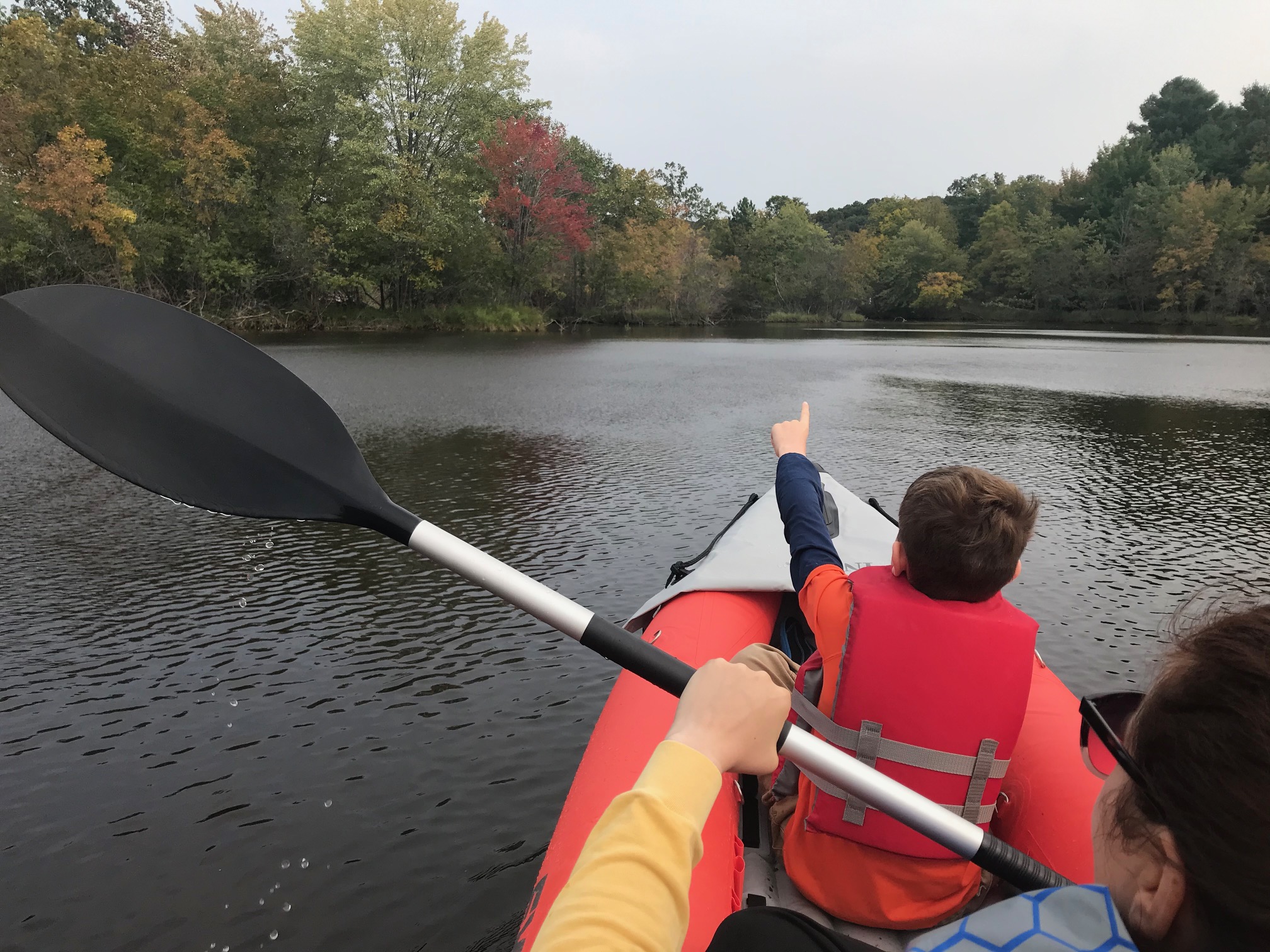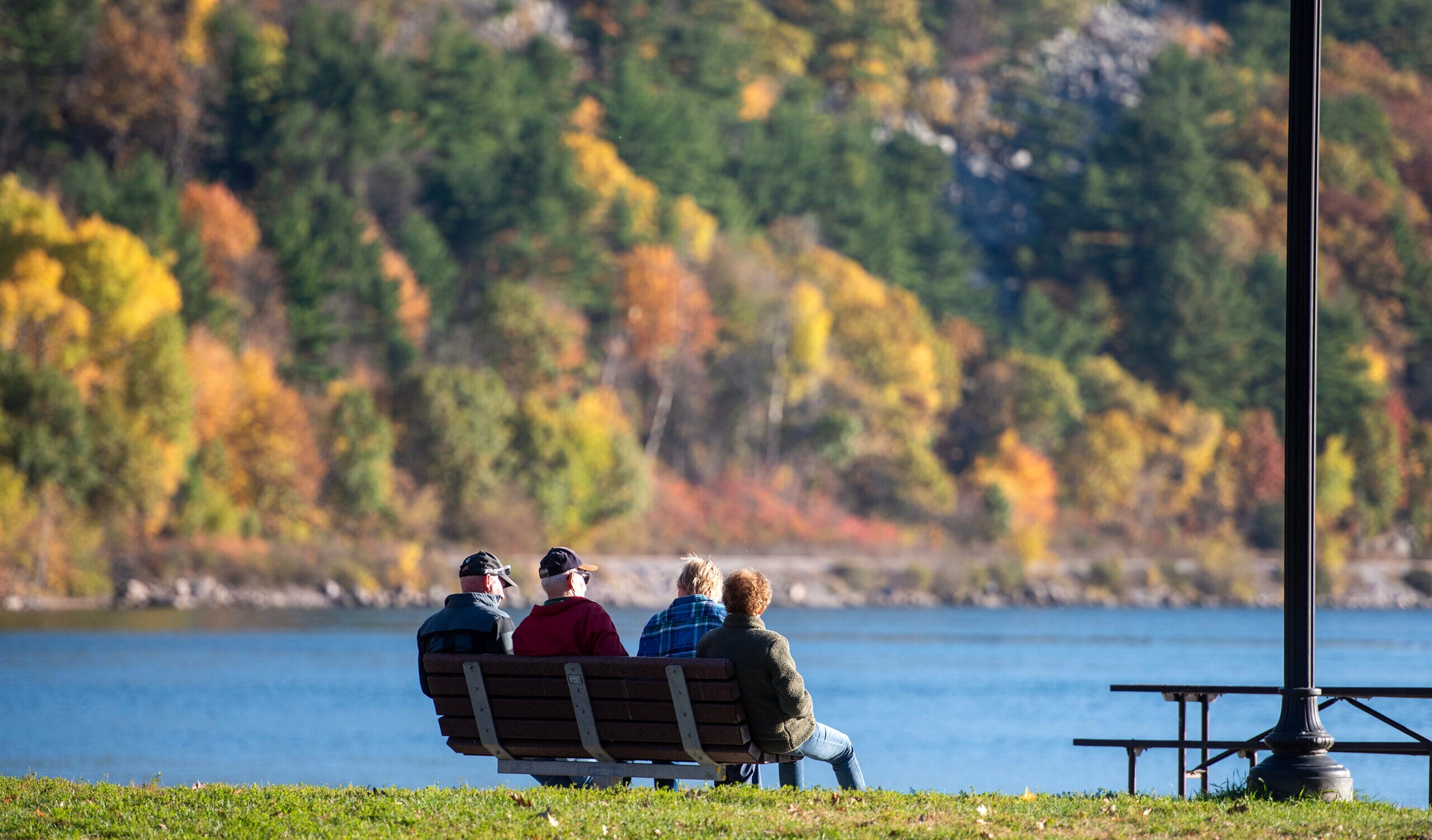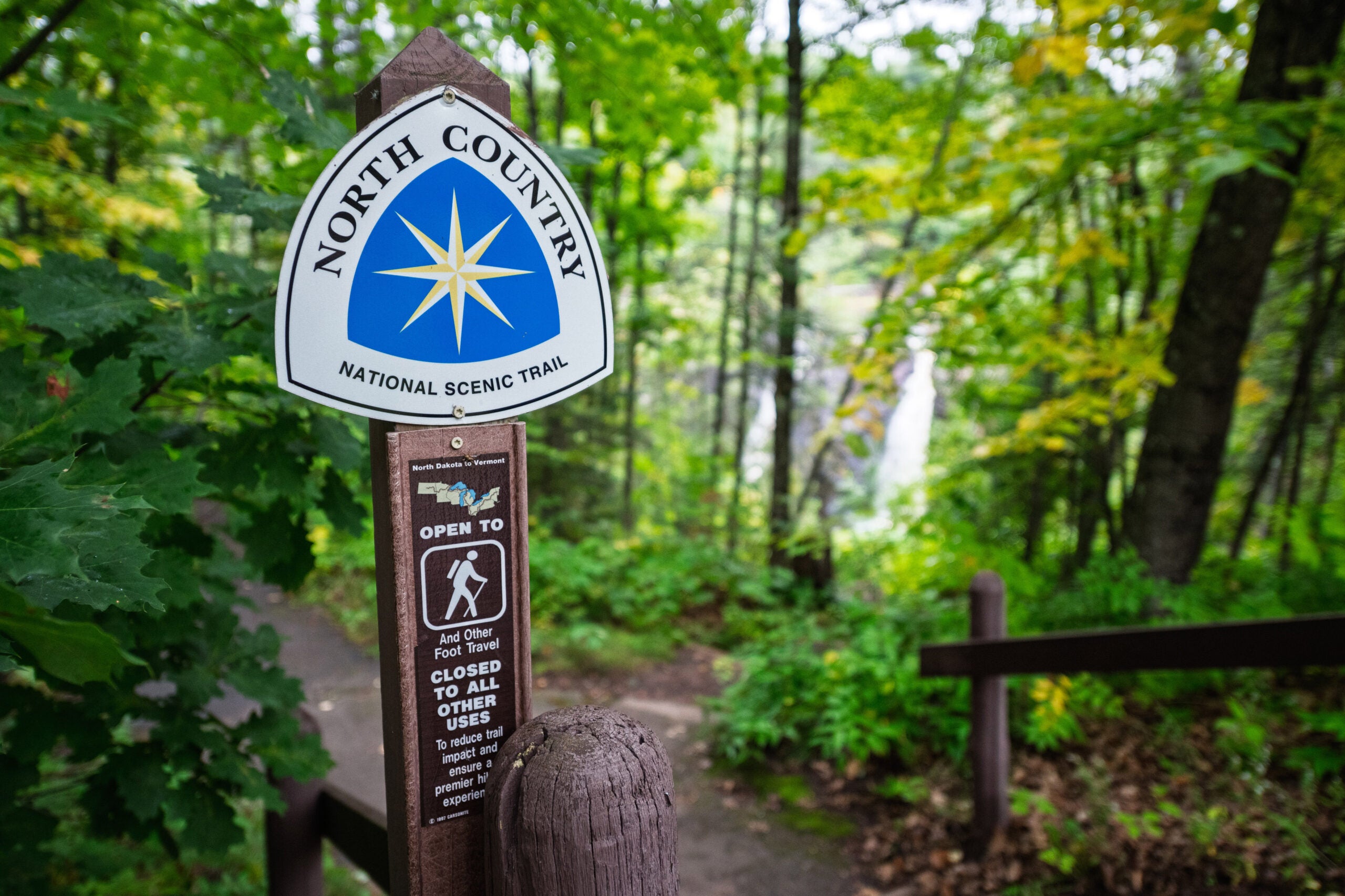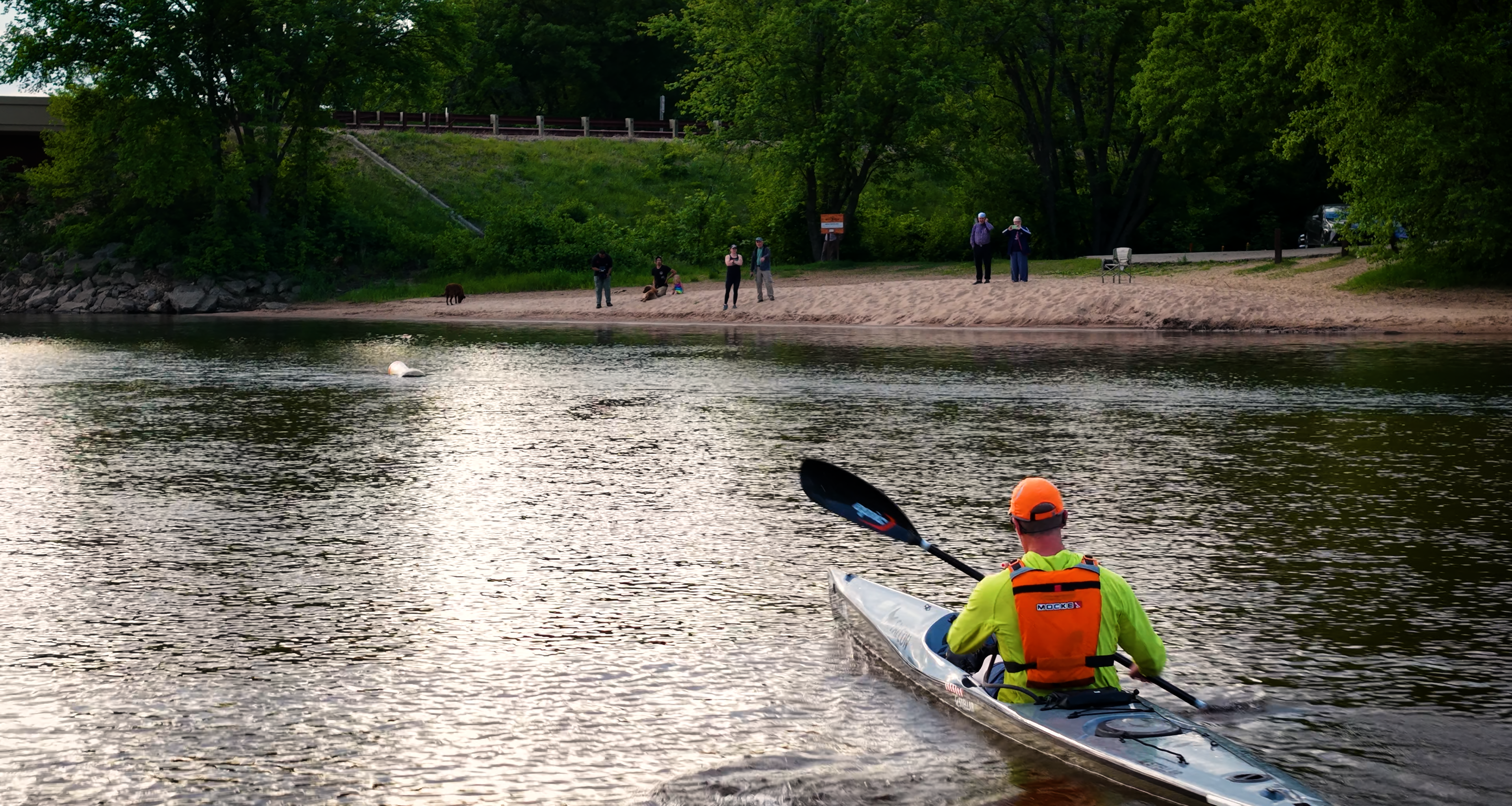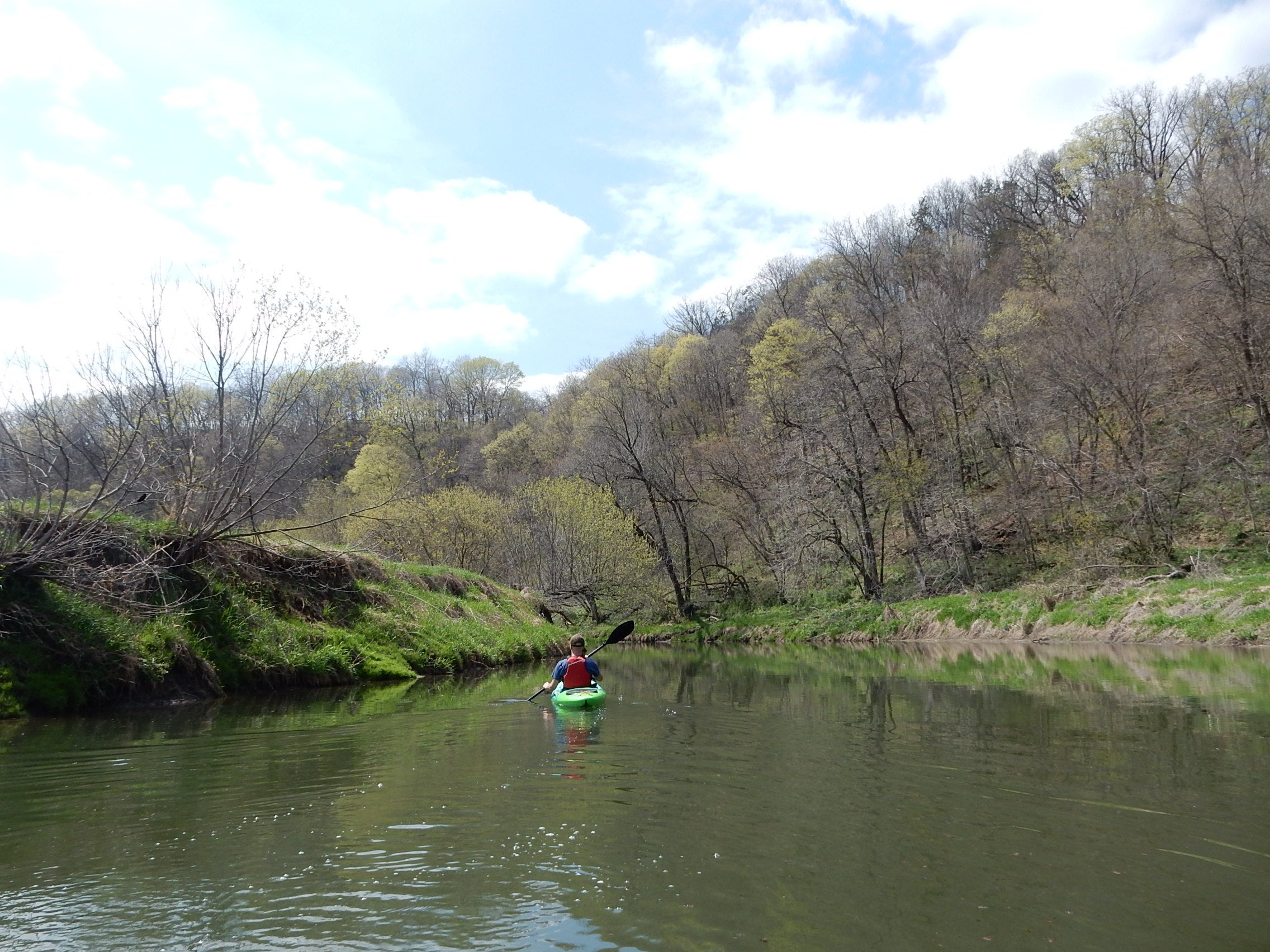A central Wisconsin water trail that emphasizes the Wisconsin River’s place in history is seeking national designation.
Organizers have a long-term vision for the Great Pinery Heritage Trail that includes the addition of campsites along the Wisconsin River, as well as the trail’s extension to the north and south.
The 108-mile trail begins at the Hat Rapids dam south of Rhinelander and runs through Tomahawk and Merrill in Lincoln County and Wausau in Marathon County, terminating at the Lake DuBay dam in northern Portage County.
News with a little more humanity
WPR’s “Wisconsin Today” newsletter keeps you connected to the state you love without feeling overwhelmed. No paywall. No agenda. No corporate filter.
The new trail was designated as a state waterway in 2022. Organizers received federal assistance grants in 2023 and 2024 that will help the trail achieve the National Parks Service’s national water trail designation next year.
Efforts to promote the trail as a paddling destination may already be paying off. Based on Geographical Information System or GIS data collected from visitors’ phones, more than 11,000 paddlers visited the area in 2023 — a 14 percent increase from the year before, said Bill Bertram, board president of the Wausau and Marathon County Parks Foundation.
For most people, canoeing or kayaking is a one-day activity, and they may see only a portion of the water trail at a time. Only about 3 percent of paddlers are “through-paddlers” who camp overnight, Bertram said.
“What stops them is there aren’t enough camping sites,” Bertram said.
Bertram and others behind the water trail’s development hope they can attract serious paddlers and day-trippers alike by adding up to at least 20 campsites along the route. They’ve also installed boat launches accessible to those with disabilities, and are using new digital tools to help people plan their trips.
“We’ve calculated all of those times based on the flow of the river, and then we’ve put GIS markers on those,” Bertram said. “If you have your cellphone, (you can) say, ‘I want to put in at Riverside in Merrill and I want to get out at Brokaw. How long a time will that take me?’”
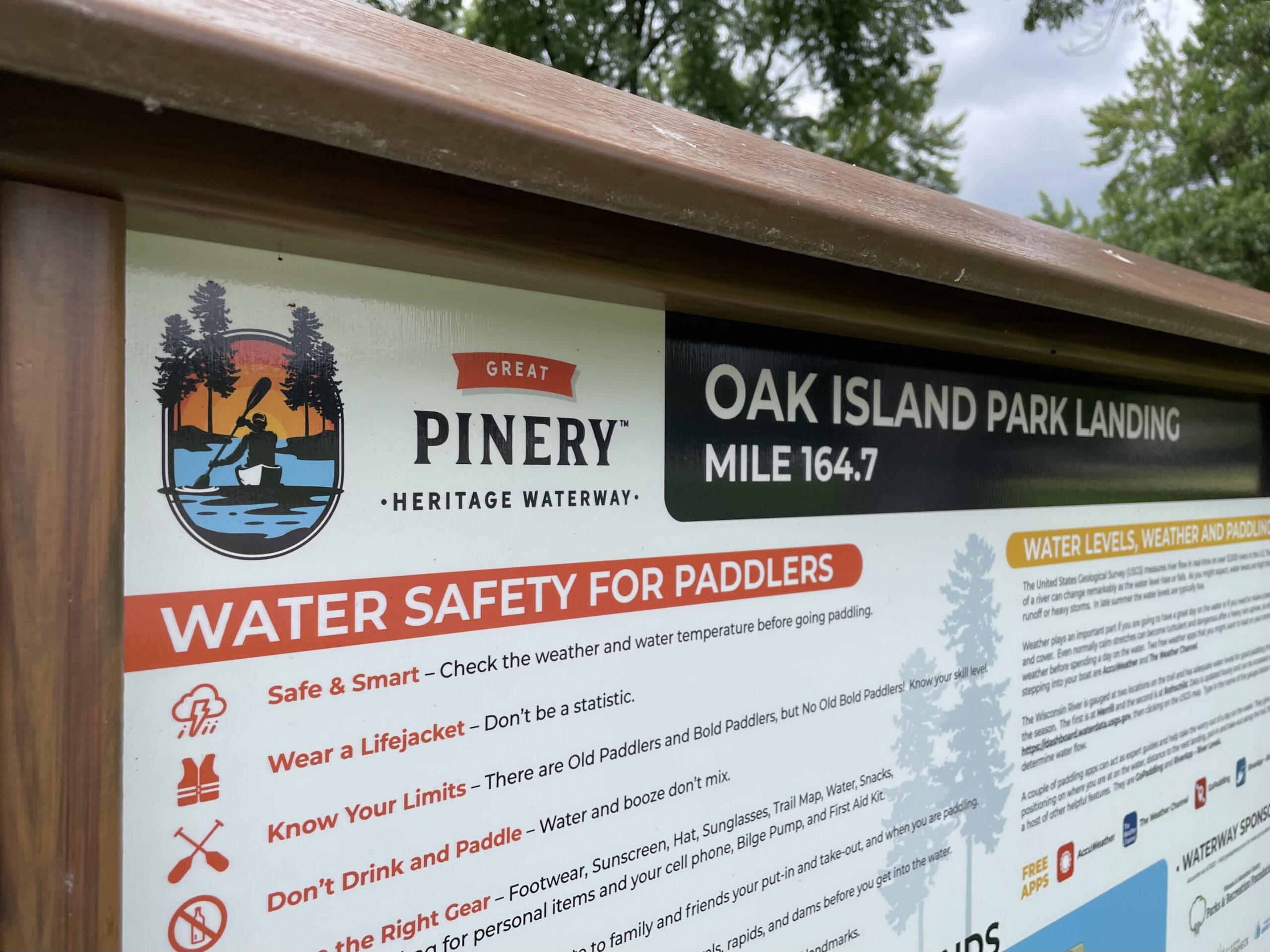
Parts of the river are scenic and secluded, while other parts of the trail travel through urban areas and reflect the river’s history in many places as an industrial site.
Bertram said signs tell the story of the river from its uses by the Ojibwe and other Native peoples through the logging boom of the 19th century and into the present day.
It’s called the Great Pinery Heritage Trail because of the centrality of the Wisconsin River to the logging trade. In the 1800s, loggers floated white pines from the Northwoods down the river to sawmills and factories where they were processed.
“That is a defining moment in Wisconsin that opened up the Northwoods to the cutting of the pine, and really made northern Wisconsin and the Wisconsin River the superhighway that it would become,” Bertram said.
Wisconsin is already home to several national water trails.
The Chippewa River Water Trail includes paddling through downtown Eau Claire; the Rock River Water Trail includes 320 miles in southern Wisconsin as well as northern Illinois and Iowa; and the St. Louis River Estuary Water Trail includes parts of Superior and Duluth, Minnesota. A 200-mile stretch of the St. Croix River in western Wisconsin boasts a different federal distinction, that of National Scenic Riverway.
Bertram said he hopes the Great Pinery trail will become a tourism destination. And he has a long-term vision for a water trail that could encompass nearly the whole length of the state.
“The long-term goal we have is to continue the trail to the north and to the south, so someday the trail will start out at the headwaters of the Wisconsin up in Michigan,” he said. “And we hope to continue that and then connect with the lower Wisconsin sometime in the future, to make a 430-mile paddling trail.”
Wisconsin Public Radio, © Copyright 2025, Board of Regents of the University of Wisconsin System and Wisconsin Educational Communications Board.

